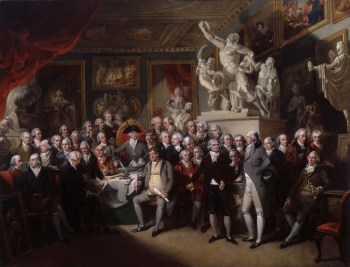William Tyler RA (1728 - 1801)
William Tyler RA (1728 - 1801)
RA Collection: People and Organisations
Little is known of the early life of the architect and sculptor William Tyler, although he studied under the prominent rococo sculptor Louis-François Roubiliac (1702 – 1762). He was a director of the Society of Artists and regularly exhibited his sculptures at the Society in the 1760s.
Tyler was one of three sculptors, along with Joseph Wilton (1722 – 1803) and Agostino Carlini (c.1718 – 1790), who were Founder Members of the Royal Academy in 1768. He exhibited at the Academy between 1769 and 1800, mostly contributing models for monuments or buildings.
Tyler also played an administrative role in the Academy. With his fellow Academician George Dance (1741 – 1825) he carried out a review of its financial affairs in 1796 after the death of the first Treasurer, Sir William Chambers (1723 – 1796). Dance and Tyler became the Academy’s first Auditors, making recommendations including the appointment of Trustees (a system which continues to this today).
Tyler specialised in funerary sculpture, including tombs in Westminster Abbey and monuments in Southwark Cathedral. Towards the end of his life, Tyler also worked as an architect. His architectural work included the Ordnance Office in Westminster (1779-80; demolished 1805) and the Villa Maria, Kensington (c.1800) commissioned by the Duke of Gloucester for his wife.
Tyler died at his home in London in 1801.
Profile
Foundation Member
Born: 18 April 1728 in United Kingdom
Died: 6 September 1801
Nationality: British
Elected RA: 10 December 1768
Gender: Male
Preferred media: Architecture and Sculpture

